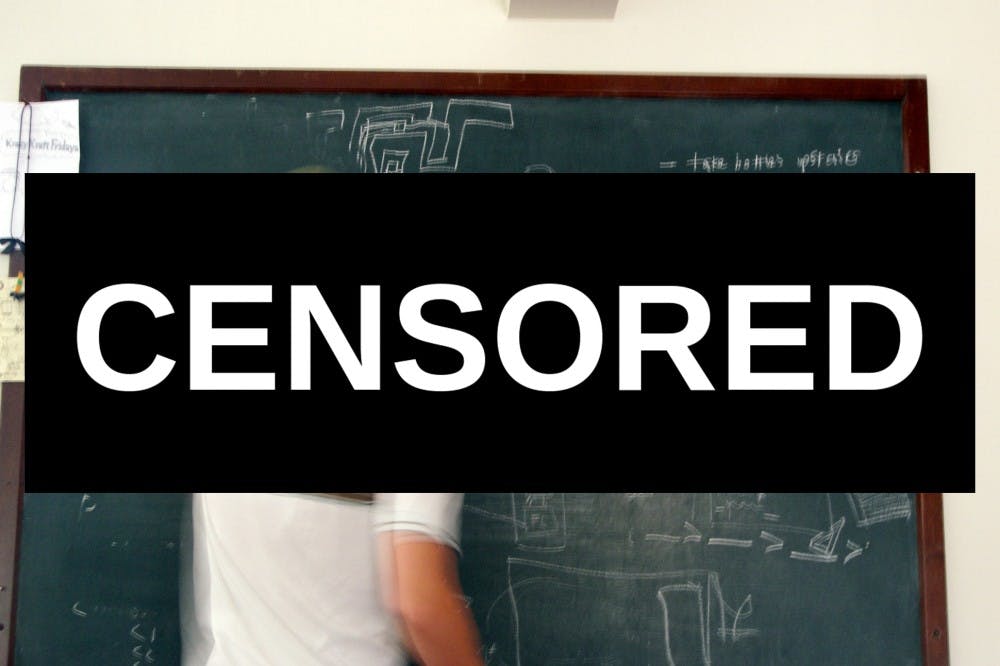
Imagine if before class a teacher presented their students with a warning about course material that could potentially be traumatizing for students. Imagine if classrooms adopted a warning similar to the “viewer discretion is advised” so commonly seen in movie theaters.
These advisories are called trigger warnings and — although mostly absent at Penn —their adoption in college classrooms have been part of a national conversation across university campuses in the past 12 months. The main goal of trigger warnings is to alert students of course material that may trigger trauma to students who have been victims of rape, sexual abuse and mental illness.
Trigger warnings have been a common feature of the online world since the inception of message boards, online forums and the blogosphere. Their proposed use in college curriculums, however, is a more recent development.
In February 2014 the student government at the University of California, Santa Barbara approved a resolution calling for the school to make trigger warnings mandatory when professors presented material that could trigger PTSD symptoms, according to The Daily Nexus. The sponsor of the resolution was a UCSB student — a victim of sexual abuse — who felt overwhelmingly uncomfortable when a graphic depiction of rape was presented in one of her classes.
Some college administrations have taken action on the issue. Last year, Oberlin College published an official document advising its faculty to remove triggering material when it doesn’t directly contribute to learning goals, per The New Republic . It also suggested making triggering material optional for students.
Both college newspapers and the national press took part in the trigger debate. In fact, many universities nationwide — like Oberlin — were pressured by its students to support some version of classroom trigger warnings.
At Penn, the support for trigger warnings did not reach the overwhelming scope it did in other campuses. The debate was mostly limited to a handful of opinion pieces on The Daily Pennsylvanian, two seminars offered by the Gender, Sexuality and Women’s Studies Department and a podcast on the topic by graduate students from the Annenberg School of Communication.
In fact, a September 2014 DP editorial argued against university mandated trigger warnings claiming that they curtail academic freedoms, free expression and do little to aid students suffering from trauma.
“We have come to Penn because we want to be challenged — to have our perspectives tested and refined,” the editorial stated. “That sometimes requires that we grapple with material that we find disagreeable or even disgusting. Anything less would fall short of a true education.”
Critics of trigger warnings claim that these sort of advisories could set a dangerous precedent for all sorts of material to be censored. A student at Rutgers University, for example, received nationwide criticism after suggesting that F. Scott Fitzgerald’s The Great Gatsby be preceded with a trigger warning for its “gory, abusive and misogynistic violence.”
However, others like Annenberg Ph.D. student Alexandra Sastre argue that trigger warnings can be used — although not always — to complement the fundamental values of academic freedom and free speech.
“[Free speech] is at the heart of the purpose of trigger warnings. If you think about it free speech can, in essence, only really happen under conditions of equal power where the free speech of one person or party doesn’t infringe on the free speech of another person,” said Sastre.
“In theory, trigger warnings position themselves as a tool to foster that kind of environment of equality ... We need to acknowledge people’s individual positionality, we can’t ... presume that everyone is going to react to a material in the same way.”
Sastre mentioned utilizing an adaptation of a trigger warning in the “Gender & Society” class she taught last spring. On the first day of class she issued a “broad” trigger warning so that students were aware of the potentially traumatizing material that was going to be discussed throughout the semester.
“I said we would be dealing with things that are often very difficult, often challenging ... and I wanted to be forthright about that to create the conditions where students felt comfortable ... to discuss anything that may have felt overwhelming, uncomfortable or challenging,” said Sastre.
The Daily Pennsylvanian is an independent, student-run newspaper. Please consider making a donation to support the coverage that shapes the University. Your generosity ensures a future of strong journalism at Penn.
DonatePlease note All comments are eligible for publication in The Daily Pennsylvanian.








